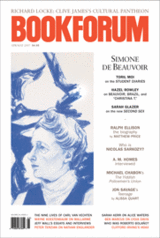
The boy protagonist in Phil LaMarche's roiling debut novel, American Youth, is tough and lonely in the manner of Russell Banks's lost-kid hero in Rule of the Bone. Ted LeClare's detachment from his peers is set against the backdrop of his family's—and the region's—economic dislocation, and LaMarche renders the culturally barren New England landscape with language that is both portentous and propulsive.
Ted's first days of high school are upended by his role in the tragic death of a friend. Emotionally reclusive even before the accident, the boy begins a downward spiral that is interrupted only by an invitation to join a group of kids who call themselves the American Youth. He is drawn to the promise of companionship and quickly seduced by the group's purist identity, fostered by their charismatic leader, George. Yet by the time their neo-Nazi tendencies begin to repel Ted, he's already in over his head. Muddying the waters is his budding romance with Colleen, a fierce and independent girl who has been dating George though isn't aligned with the American Youth. In a story filled with violent imagery, the reader at once understands that only with the spilling of more blood will Ted's fate be decided.
LaMarche's writing hints at the stark rural realism of Cormac McCarthy and is most powerful when honed, as in the description of a wound to the tongue that Ted suffers in a fight: "By the end of the week the swelling was gone and the cut had begun to close. Still the boy chose not to talk. He liked the silence. It allowed him to stay back, behind his eyes, where it was quiet and less complicated." At times, however, LaMarche exhibits a tendency toward overstatement. The profusion of guns and knives throughout the story is supplemented with heavy doses of weapon imagery to drive home the point that Ted's economically depressed environs have yielded some nasty social problems. And when LaMarche rolls out a metaphor of cartoon violence to conclude a section late in the book, the earnestness of his language flirts with cliché: "An episode of Tom and Jerry was in full swing. A clothes iron fell from its perch and struck the cat in the face. The cat's face took on the flat shape of the iron."
Viscerally capturing the profound confusion of adolescence is a delicate endeavor for fiction writers. When LaMarche rises to this challenge with focused compassion, Ted LeClare becomes a heroic portrait of blind (and mute) resilience. His coming-of-age crests not with a promise of respite but with a cold recognition that his struggle—both psychological and corporeal—will "begin again. . . . Nothing will stop."

